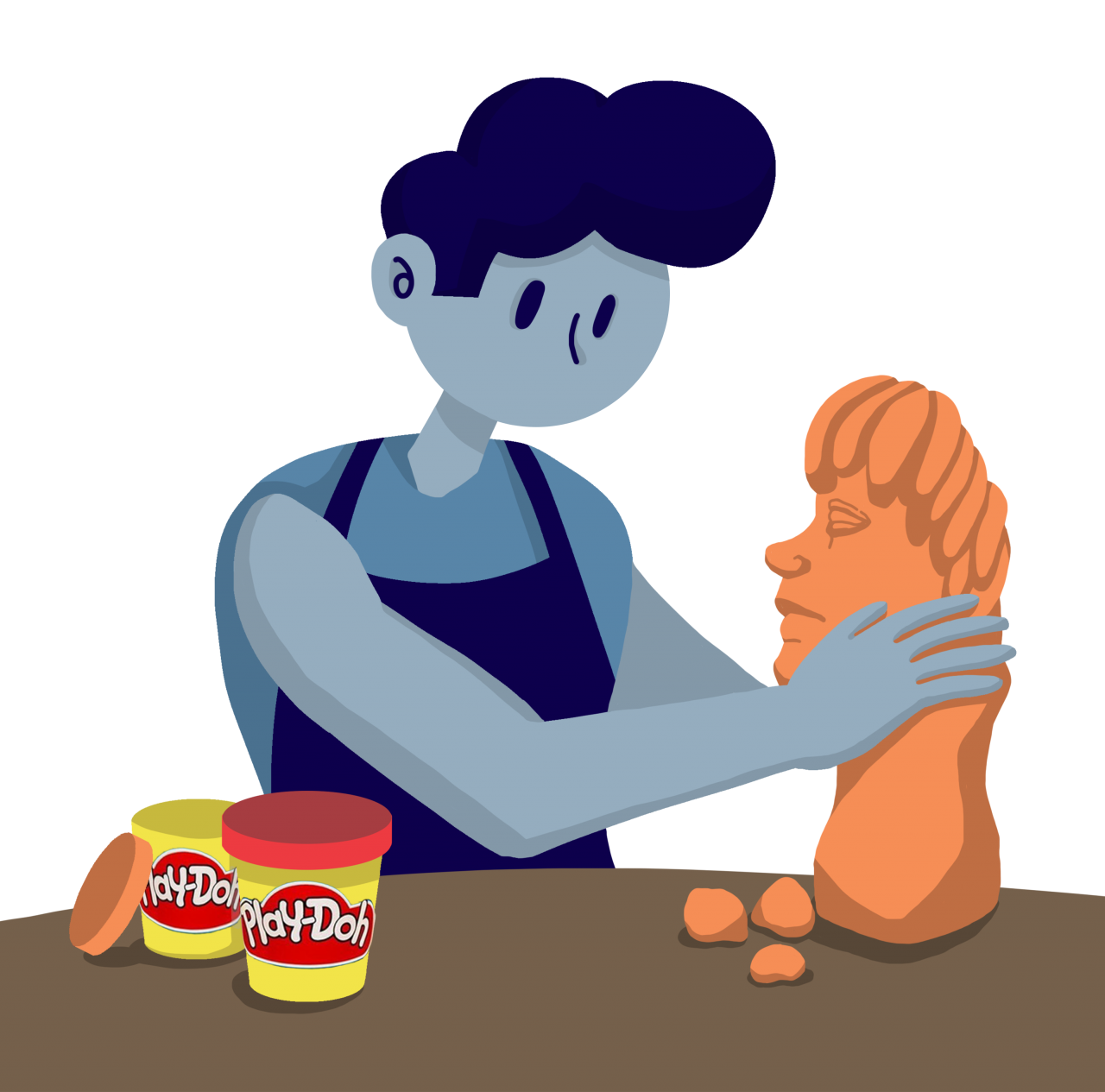illustration by Diep Hoang
For the fall 2020 semester, the studio art department is projected to have around 16 courses offered, with an estimate of about 150 students enrolled. Of these courses, only about one-third will be offered to students through Trinity’s new Tigerflex option, which gives students the chance to be on-campus. The classes being offered in-person include printmaking, drawing and painting courses while other popular classes such as digital photography, sculpture-making and other upper-level design courses will be taught strictly online.
In order to follow both Trinity and CDC guidelines for public safety and proper sanitization practices during COVID-19, the department has taken several measures to ensure on-campus students’ safety. To compensate for larger class sizes, some courses will be split between separate classrooms to accommodate social distancing guidelines. The department has bought face shields and will be requiring that all students wear a form of face-covering while indoors. Additionally, to make the sanitization process in-between classes safer for faculty, the department has ensured that there will be monitors in each class period to watch over students and help them sanitize their own personal equipment before leaving the studio.
Dr. Randy Wallace, a studio manager and professor within the department, explained that the department’s greatest concern was whether students would have the needed supplies.
“We hope that students, online or in-person, have the materials to complete their coursework,” Wallace said.
In the event of a full campus closure, studio art faculty purchased extra materials and put together “art kits” for their students to take home and use to complete their work. While some non-returnable tools like digital cameras will not be available to take home, supplies like paints, brushes and papers will be included in the kits sent with students.
For students off-campus, Elizabeth Ward, profesor of art and art history, described the struggles brought with virtual demonstrations for herself and her students during her spring 2020 drawing and senior studio classes.
According to Ward, virtual artistic demonstrations often lose details that are crucial to the creation of projects in their full form. In preparation for those enrolled online in her fall courses, she has been working with ITS to ensure that her students receive a more representative view of artistic techniques as she teaches them over Zoom.
“I’m putting a lot of stock into technology to truly show what I’m doing,” Ward said.
With regard to the content of the courses, each class is projected to maintain a central focus on themes such as the principles of design, composition, artistic critique, historical events and the social implications of art. While COVID-19 has posed a difficult challenge for faculty, the circumstances of a global pandemic have pushed professors towards viewing the content in a much different way than ever before.
Studio art professors always encourage their students to use their art as a vehicle to express themselves, all they go through and the environment around them. During the pandemic, Wallace noted that the conditions that students are living through are particularly new and worthy of exploring in their art.
“Art is going to react to its location, environment, and historical time; the manner of how we make art is defined by our circumstances. In some ways, this is a unique opportunity for students to address our time and the compromises we must make,” Wallace said.
In addition to the artistic possibilities brought about by newer conditions, sophomore Sally Wyma uses art as a therapeutic escape from the stresses of the pandemic. During her spring 2020 semester, her painting course was moved online, forcing students to convert their homes into working studios.
“The reason I got into art and kept with it is because it’s such a release of all my emotions. When we moved online I was very stressed but having paintings to turn in was very therapeutic to me,” Wyma said.
Wyma aims to continue through this mindset during her fall 2020 digital photography course.
The department is currently working to better their knowledge of Zoom and other virtual technologies while also figuring out how senior theses and projects will be presented following the temporary closure of the Michael and Noemi Nordoff Art Gallery.
“I appreciate the patience of the students and their cooperation,” Ward said.







